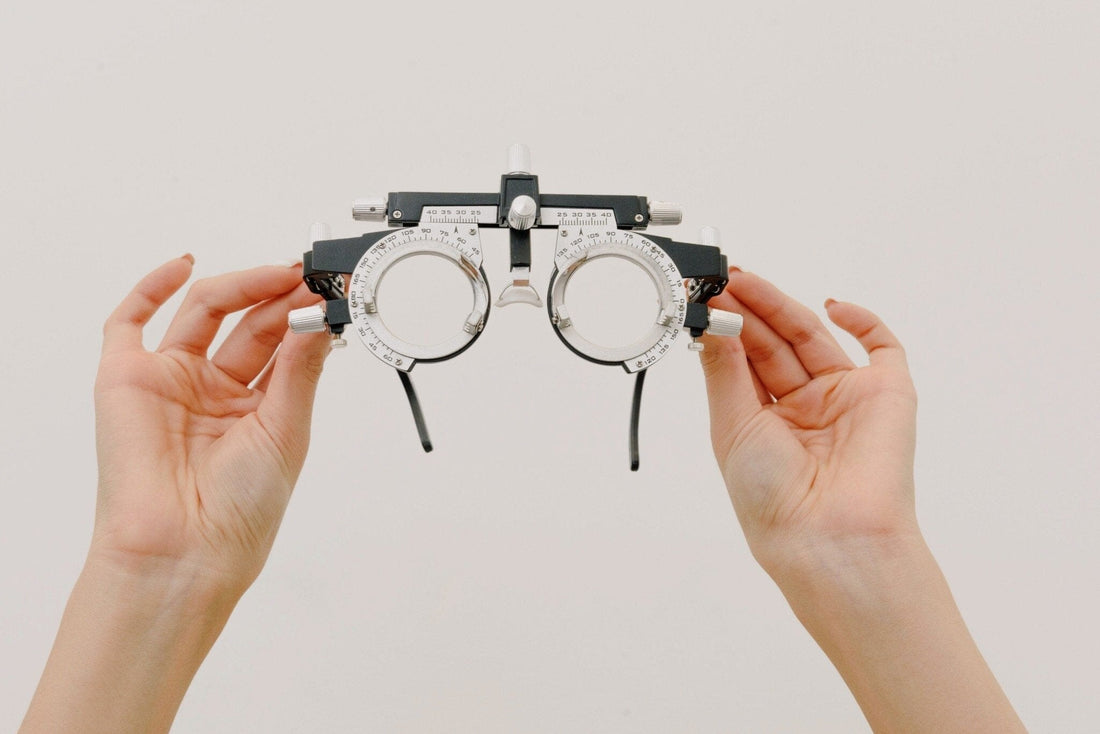
How to read your glasses prescription: What do the terms mean?
Share
 Each month, we feature a post on eye health and eye care written by our very own Bôhten Optometrist Dr. Henry. Providing insight on the dos and don'ts of eye care is our way of educating our community with the hope of improving eye health overall.
Each month, we feature a post on eye health and eye care written by our very own Bôhten Optometrist Dr. Henry. Providing insight on the dos and don'ts of eye care is our way of educating our community with the hope of improving eye health overall.
The terms on your eyeglass prescription are numbers that describe exactly how your glasses lenses should be cut for you to enjoy high quality vision accuracy. Typically, you’ll see several abbreviations and words labeling all of your important data.
Now, we will help you understand more about the main terms and abbreviations used on your prescription such as your Sphere, Cylinder, Axis, Prism, PD, Right Eye (OD, RE), Left Eye (OS, LE) and more.

• Sphere (SPH):
The term "sphere" is essentially the degree of correction needed to correct your near or farsightedness.
• Cylinder (CYL):
This number indicates the lens power needed to correct astigmatism in your eyes.
• Axis:
The axis indicates the orientation of astigmatism, measured in degrees from 1 to 180. The number ranges from 1 to 180, with the number 90 corresponding to the vertical meridian of the eye and 180 corresponding to the horizontal meridian of the eye. If you do not have astigmatism and do not have a cylinder power on your prescription slip, you will not have an axis number, either.
• Prism:
A prism number indicates the amount of prismatic power, measured in diopters, needed to compensate for any alignment problems in your eyes.
• Base:
This will either appear in a column of its own or be included in the prism column. This column indicates the direction of a prism by noting the relative position of its thickest edge.
If the base is directed upwards, the column will read "BU," "base up" or simply "up." If the base is directed down, it will read "BD," "base down" or "down." If the base is directed toward the wearer's nose, the column will read "BI," "base in" or "in." If the base points away from the wearer's nose and toward the ear, the column will read "BO," "base out" or "out."
• Add or NV:
The number associated with either of these terms indicates the additive power needed to correct your immediate near vision if your prescription is primarily for distance correction.
• Pupillary Distance (PD)
This number indicates the distance from the center of one pupil to the center of the other, and is an important number for lens customization. We hope this breakdown of the terms and abbreviations used provides you with better clarity and understanding when it comes to your prescription. If you are ever in doubt, please consult your optometrist for a detailed breakdown of your specific prescription.
We hope this breakdown of the terms and abbreviations used provides you with better clarity and understanding when it comes to your prescription. If you are ever in doubt, please consult your optometrist for a detailed breakdown of your specific prescription.
Written by our in-house Optometrist, Dr. Henry
